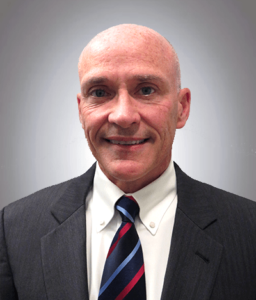The numbers don’t lie.
After more than 10 years serving in the New York Office of the Medicaid Inspector General, including as the Acting Inspector General, I can attest firsthand to the unfortunate instances of fraud, waste and abuse that occur with too much regularity in home health care and home care.
Between 2011 and 2015 alone, investigations from the national Office of the Inspector General (OIG) resulted in more than 350 criminal and civil actions and $975 million in receivables. In fact, the OIG estimates more than $10 billion in improper payments in the 2015 fiscal year.
In spite of the numbers that point to the need for improvements, home health and home care play a vital role in the broader healthcare ecosystem, and increasingly, states are relying on managed care organizations (MCOs) to deliver efficient and effective Medicaid programs. For MCOs and state Medicaid programs alike, the balance between preventing fraud and continuing to provide quality care is a delicate one.
As valuable as the OIG observations about common characteristics of fraud are, they are correlations that are typically not precise enough to employ at the time of service and billing and are best used for post-payment targeting.
So how do we reduce fraud before billing occurs without impeding the necessary services and billing payment cycles and impacting the whole system?
At the simplest level, fraud can be limited with three steps:
Step 1 – Electronically gather and standardize critical data: A physician’s referral, the initial assessment, the resulting plan of care (POC), care authorizations, schedules and the details of each visit, including the duties performed, should all be gathered and standardized. Leveraging a robust technology platform, one that goes beyond traditional Electronic Visit Verification (EVV) will allow home care and home health care providers to effectively monitor and manage a standardized list of duties to ensure they are authorized and consistent with the POC.
Step 2 – Apply real-time edits to the standardized data to ensure that the visit is fully authorized and consistent with the necessary care. Any exceptions should be actively addressed and resolved. By leveraging a technology platform or EVV solution, home care stakeholders can make real-time edits to ensure that a visit is scheduled at the time of clock in, that the duties are consistent with the POC and make proactive recommendations if any key details are inconsistent with the POC.
Step 3 – Monitor and improve. Making the data available not only to the provider, but to the payer level (managed care plans) and, ultimately, the state Medicaid program level is essential to provider oversight and the ability to make comparisons. By enabling monitoring at each level of the ecosystem, the ability to isolate issues and drive improvement is enhanced dramatically.
Going beyond the data – ensuring collaboration
While following the described steps and making standardized data available are effective, obstacles remain.
The siloed nature of the home and home health care system results in many opportunities for fraud, waste and abuse, but it also opens up the door to miscommunication. Integrating platforms between payers and their network providers and extending communication and collaboration opportunities to daily operational activities can streamline the entire home care and home healthcare process.
As Acting Medicaid Inspector General, it was clear to me that the systems least fraught with fraud were those that shared information freely between Medicaid payer and provider. When two parties collaborate effectively, there is more opportunity to recognize issues, spot instances of fraud and proactively prevent them.
It’s clear that the home care system is continuing to evolve to the point where all stakeholders are actively communicating and collaborating. This leads to better member outcomes, less hospital readmissions and, ultimately, a more effective health care system.
While fraud, waste and abuse in home care and home health care will never be eliminated, standardizing, automating, monitoring and, ultimately, collaborating are the best steps to effectively address the problem while avoiding steps that could impact the whole system.

Tom Meyer is the chief program integrity officer at HHAeXchange. Meyer served as New York State’s Acting Medicaid Inspector General, offers more than 30 years of experience in information technology, and more than 10 years in the New York State Office of the Medicaid Inspector General.




